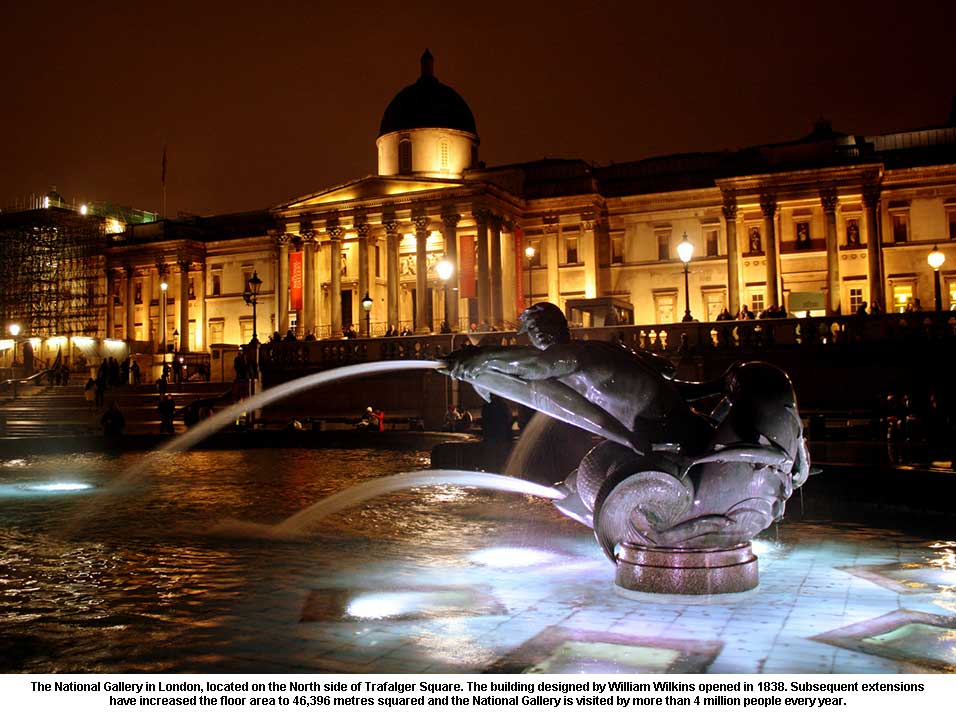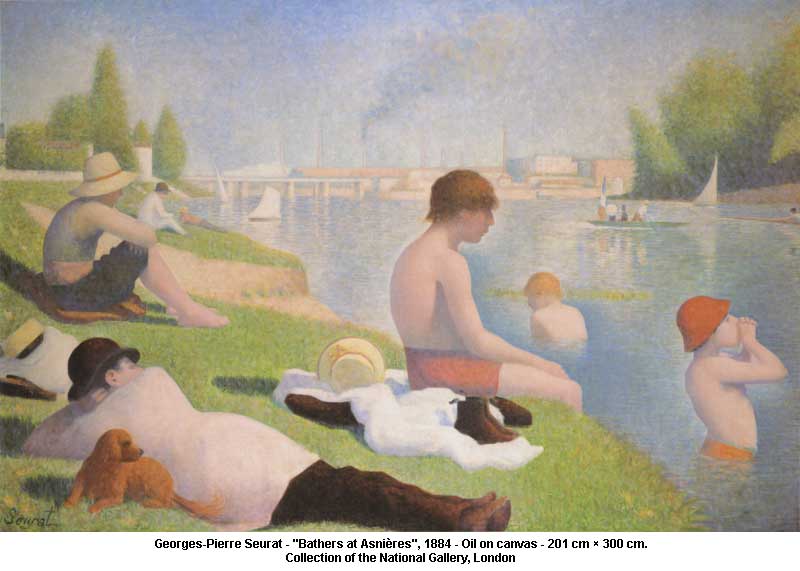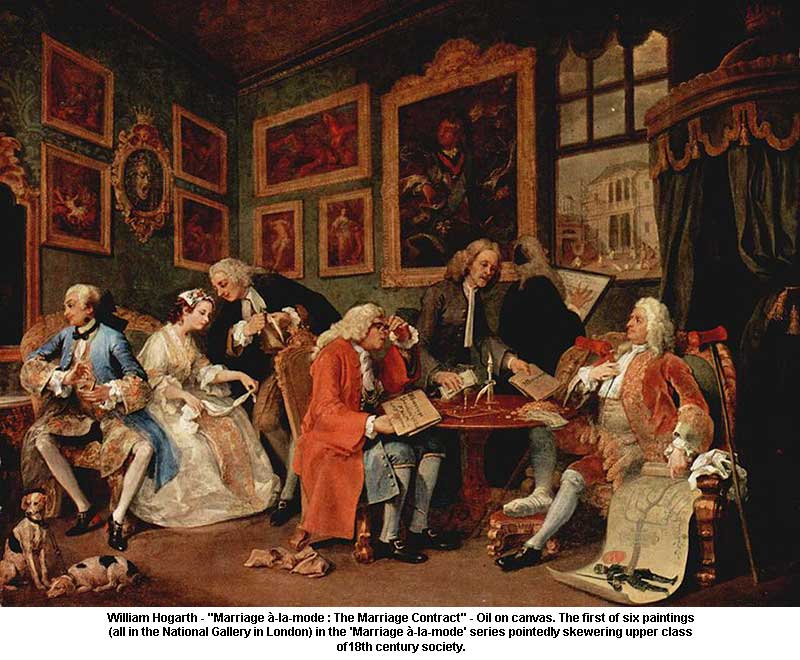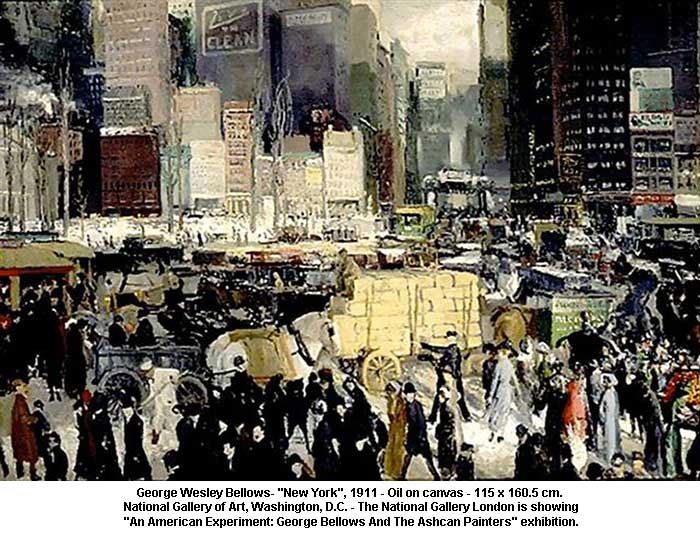1824 National Gallery in London opened to the public, May 10
The National Gallery London ~ One Of The Best Collections Of European Art In The World

Unlike comparable art museums such as the Louvre in Paris or the Museo del Prado in Madrid, the National Gallery in London was not formed by nationalizing an existing royal or princely art collection. The History of London’s National Gallery dates back to April 1824 when the House of Commons agreed to pay £57,000 for the picture collection of the banker John Julius Angerstein. His 38 pictures were intended to form the core of a new national collection, for the enjoyment and education of all. The pictures were displayed at Angerstein’s house at 100 Pall Mall until a dedicated gallery building could be constructed. Angerstein’s house was small and unsuited to becoming an art gallery (it had to close for a while due to subsidence) and was compared unfavorably with other national art galleries, such as the Louvre in Paris, and ridiculed in the press.
So, in 1831 Parliament agreed to construct a dedicated building for the National Gallery at Trafalgar Square. There had been lengthy discussion about the best site for the Gallery, and Trafalgar Square (at the time being constructed on the site of the King’s Mews in the Charing Cross district) was eventually chosen as it was considered to be at the very centre of London. Trafalgar Square could be reached by the rich driving in their carriages from the west of London, and on foot by the poor from the East End. It was felt that in this location the paintings could be enjoyed by all classes in society.
The new building designed by William Wilkins finally opened in 1838. There was a lot of public criticism of the Wilkins’ building, King William IV (in his last recorded utterance) thought the building a “nasty little pokey hole”, while the novelist William Makepeace Thackeray called it “a little gin shop of a building”. Some of these criticisms were addressed through the landscaping of Trafalgar Square, the steps in front of the National Gallery serving to increase its height and prominence, but in 1869 the architect E.M. Barry was asked to submit designs for rebuilding the entire Gallery. After much discussion, it was decided that the existing building should remain, and instead, a new wing should be added. This was completed in 1876, and added seven new exhibition rooms at the east end, including the impressive dome. The Royal Academy of Arts which had also been housed in the National Gallery building moved out in 1869, leaving extra space for the National Gallery. Continuing expansion of the collection led the trustees to campaign long and hard for additional space.
Eventually, in 1907, barracks at the rear of the Gallery were cleared and work began to construct five new galleries. Further expansion was carried out in 1975, when the ‘Northern Extension’ was completed, providing 9 large rooms and 3 smaller ‘cabinet’ rooms of additional exhibition space. In 1985 Lord Sainsbury and his brothers agreed to finance the construction of a new wing on a site next to the Gallery which had been vacant since the Second World War, when a furniture shop was destroyed by bombing. The new Sainsbury Wing, designed by Pritzker Prize winning architect Robert Venturi and his wife, Denise Scott Brown, was opened in 1991, to display the entire early Renaissance collection. With a commitment to free admission, a central and accessible site, and extended opening hours the Gallery has ensured that its collection can be enjoyed by the widest public possible, and not become the exclusive preserve of the privileged. From the outset the National Gallery has been committed to education. Students have always been admitted to the Gallery to study the collection, and to make copies of the pictures. A vibrant education program continues today for school children, students, and the general public. The program includes free public lectures, tours and seminars. Following the completion of the Sainsbury Wing, the Gallery has a total floor area of 46,396 metres squared and is visited by more than 4 million people every year. Visit the National Gallery’s website at … http://www.nationalgallery.org.uk/
The first paintings in the National Gallery collection came from the banker and collector John Julius Angerstein. They consisted of Italian works, including a large altarpiece by Sebastiano del Piombo, “The Raising of Lazarus”, and fine examples of the Dutch, Flemish and English Schools.

In 1823 the landscape painter and art collector, Sir George Beaumont, promised his collection of pictures to the nation, on the condition that suitable accommodation could be provided for their display and conservation. In 1826, they went on display alongside Angerstein’s pictures in Pall Mall until the whole collection was moved to Trafalgar Square in 1838. Initially, the Gallery had no formal collection policy, and new pictures were acquired according to the personal tastes of the Trustees. By the 1850s the Trustees were being criticised for neglecting to purchase works of the earlier Italian Schools, then known as the Primitives. Following the reform of Gallery administration in 1855, the new Director travelled throughout Europe to purchase works for the Gallery. In the 10 years that he was Director, Sir Charles Eastlake ensured that the Gallery’s collection of Italian painting expanded and widened in scope to become one of the best in the world. Eastlake’s purchases included Botticelli’s “Adoration of the Kings” and Uccello’s “The Battle of San Romano”.

In 1871 the Gallery’s collection was broadened yet further, when 77 paintings were bought from the collection of the late Prime Minister, Sir Robert Peel. These consisted mainly of Dutch and Flemish paintings, and included Meindert Hobbema’s “The Avenue at Middleharnis”. From the very beginning, the National Gallery’s collection had included works by British artists. By the mid-1840s, the rooms of the National Gallery had become overcrowded. When Robert Vernon presented a large gift of British works to the Gallery in 1847, they had to be displayed elsewhere, first at Vernon’s private house, and later at Marlborough House. Not long afterwards, the artist Joseph Mallord William Turner bequeathed over 1,000 paintings, drawings and watercolors. When they came into the collection in 1856, they had to be displayed at South Kensington, along with the Vernon collection, which was moved from Marlborough House.

In 1876 the National Gallery was enlarged, and the paintings were returned to Trafalgar Square. However, by this time a precedent had been set for exhibiting British works in separate premises. In 1889 the wealthy industrialist, Henry Tate, offered his collection to the nation and subsequently offered to fund the construction of a separate Gallery for British works of art. After lengthy negotiations, a site was selected a mile away from Trafalgar Square, at Millbank, and the Gallery opened in 1897. The new gallery was officially known the National Gallery of British Art, changing its name to the National Gallery, Millbank in 1917. However, it soon became known as the Tate Gallery. The majority of the British pictures were transferred to the Tate Gallery, and only a selection of works remained at Trafalgar Square.
Amongst some of the highlights of the collection of French painting are 15 paintings by Edgar Degas, 19 works by Claude Monet and famous works by Philippe de Champaigne (“Cardinal de Richelieu), Claude Lorrain (“Seaport with the Embarkation of Saint Ursula”), Nicolas Poussin (“A Bacchanalian Revel before a Term“), Pierre-Auguste Renoir (“The Umbrellas”) and Edouard Manet. The Italian collection includes 12 paintings by Canaletto (including “The Stonemason’s Yard”), 10 by Raphael (including “Portrait of Julius II”), 10 Titians (including “Bacchus and Ariadne”) and works by Michelangelo Merisi da Caravaggio (“The Supper at Emmaus” and others), Giovanni Bellini (“The Doge Leonardo Loredan”), Sandro Botticelli (“Venus and Mars”, Leonardo da Vinci (“The Virgin and Child with St Anne and St John the Baptist”), Michelangelo (“The Virgin and Child with Saint John and Angels”), Giovanni Battista Tiepolo (“An Allegory with Venus and Time”), Tintoretto (“The Origin of the Milky Way”) and Paolo Veronese (“The Family of Darius before Alexander”). Amongst the Spanish works held by the National Gallery are paintings by El Greco (“Christ Driving the Traders from the Temple “), Francisco Goya (“Doña Isabel de Porcel”), Bartolomé Esteban Murillo (“The Heavenly and Earthly Trinities”), Diego Velázquez (“Christ in the House of Martha and Mary”) and Francisco Zurbarán “Saint Francis in Meditation”. Dutch and Flemish artworks include a selection of 20 Rembrandt works (including “Belshazzar’s Feast”) alongside works by Aelbert Cuyp (“Peasants and Cattle by the River Merwede”), Meyndert Hobbema (“The Avenue at Middelharnis”), Pieter de Hooch (“The Courtyard of a House in Delft”), Jan Steen (“Skittle Players outside an Inn”), Johannes Vermeer (“A Young Woman seated at a Virginal”), Anthony van Dyck (“The Emperor Theodosius is Forbidden by Saint Ambrose to enter Milan Cathedral”), Jan van Eyck (“The Arnolfini Portrait”), Peter Paul Rubens (“The Judgement of Paris”) and David Teniers the Younger (“Peasants at Archery”). The majority of the British pictures in the national collection were transferred to the Tate Gallery (originally under the administration of the National Gallery), and only a selection of works remained at Trafalgar Square. However, the remaining works include some of the most famous British paintings, such as John Constable’s “The Hay Wain”, J. M. W. Turner’s “The Fighting Temeraire”, Thomas Gainsborough’s “Mr and Mrs Andrews” and William Hogarth’s six pictures of “Marriage à-la-mode”, pointedly skewering upper class 18th century society.
“An American Experiment: George Bellows and The Ashcan Painters” until 30th May 2011, features 12 paintings never before seen in the UK. This exhibition introduces visitors to the American artist George Bellows and his artist friends, the Ashcan Painters: William Glackens, George Luks, John Sloan and their teacher Robert Henri. The Ashcan School was formed at the beginning of the 20th century, when American painters, principally in New York City and Philadelphia, began to develop a uniquely American view on the beauty, violence and velocity of the modern world.’An American Experiment’ contains seven paintings by the most prominent member of the group, George Bellows. He is largely known as a painter of urban scenes. The exhibition includes ‘Excavation at Night’, one of a series of images Bellows made of the building work at the site of Pennsylvania Station. However, Bellows and his contemporaries also enjoyed painting landscapes away from the metropolis. ‘The Palisades’, 1909 shows his engagement with the natural world as its main subject. It also reveals Bellows as a master of snow, alongside his work in ‘Blue Snow, The Battery’. Later works such as the ‘Big Dory’, 1913 see him absorbing avant-garde influences from Europe and anticipating the Art Deco style. The Ashcan painters were part of a widespread interest in the quality of life in modern cities during the early 20th century. Along with British artists like Walter Sickert, they represent a strong analysis of their contemporary urban experience while owing much to Old Masters such as Velázquez and Manet. Also currently showing at the National Gallery are “Jan Gossaert’s Renaissance” (until 30 May 2011), featuring over 80 works, including works on loan from the Prado in Madrid and Barber Institute of Fine Arts, Birmingham. It also features drawings and contemporaneous sculptures of the Northern Renaissance. “Bridget Riley: Paintings and Related Work” (until 22 May 2011) focuses upon Bridget Riley’s most recent paintings. Two of Riley’s works have been made directly on to the walls of the exhibition space. Riley and her studio have created a new wall drawing, ‘Composition with Circles 7’, especially for the longest wall of the Sunley Room. In addition a version of the wall-painting, ‘Arcadia’ (last seen at the major 2008 retrospective in Paris) has been recreated on a larger scale.
ANNOUNCEMENT: Our Editor has been invited to visit Museums and cultural sites worldwide, and they are featured on our Home Page (center). Because of the Editor’s travel we will be posting many interesting articles from our archives, some of the BEST Articles and Art Images that appeared in your magazine during the past six plus (6+) years . . and we are publishing current art news articles on the left hand side under RECENT NEWS .. Enjoy
| National Gallery in London | Joseph Mallord William Turner | Claude Lorrain | Michelangelo Merisi da Caravaggio | Giovanni Bellini | Bartolomé Esteban Murillo | Francisco Zurbarán | Pieter de Hooch | William Hogarth | George Bellows | Walter Sickert | Bridget Riley |